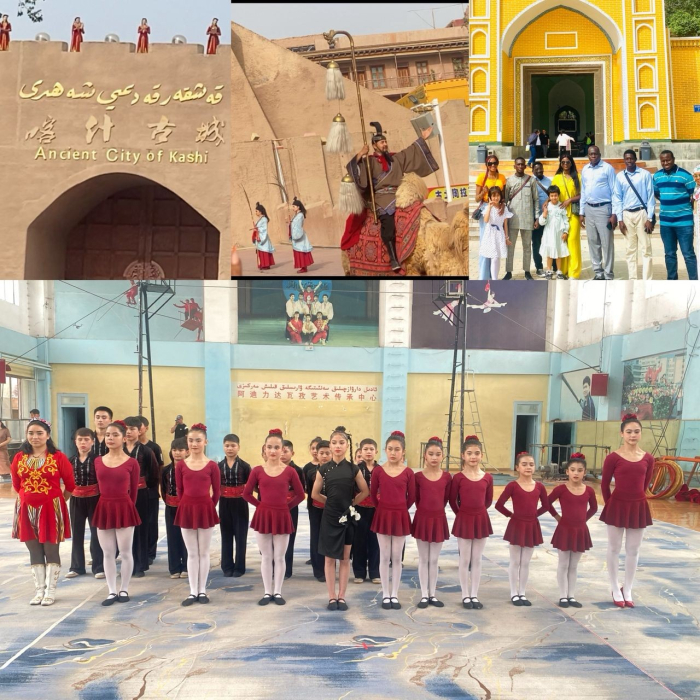
Located in southern Xinjiang, the Ancient City of Kashi captivates visitors with its remarkable artistic performances, including vibrant singing and graceful dancing. The city welcomes guests from across the world in its own special and culturally rich way.
A guide, who took journalists through key cultural sites, shared that Kashi is home to multiple ethnic groups and is known for its deep-rooted history and dynamic cultural exchanges.
He noted that Kashi is recognized as a national historical and cultural city, as well as one of China’s top tourist destinations. With over 2,000 years of history, the city remains a jewel of Xinjiang.
“Kashi is committed to promoting a sense of unity among the Chinese people, preserving outstanding traditional Chinese culture, and advancing cultural development in Xinjiang. These efforts aim to educate and inspire, giving this ancient Silk Road city a new, inclusive vibrance,” the guide explained.
However, research shows that the Ancient City of Kashi has undergone a comprehensive protection and management project for the past eight consecutive years.
As a result, Kashi’s historical districts now stand as the only well-preserved traditional areas in Western China that maintain the architectural and cultural characteristics of the ancient Silk Road era.
Described as a ‘Millennium-old city’, Kashi has earned praise as a living legend of the Silk Road and now shines as a key landmark under China’s Belt and Road Initiative.
History further reveals that the old city features winding alleys and intersecting streets, with many residential courtyards that are over 100 years old.
However, the tour guide also pointed out that the city once faced challenges, including a growing population, overcrowded buildings, and poor infrastructure.
These conditions made the city vulnerable to natural disasters such as earthquakes, posing risks to residents and hindering sustainable development.
The people of Kashi have expressed deep appreciation to the central government, the State Council, and the Xinjiang Autonomous Region Party Committee for their continuous support toward urban development and heritage preservation.
During their China stay, the Gambian journalists visited one of the largest and most well-known mosques in Kashi, where they were welcomed by the Imam, Muhamad.
Imam Muhamad gave a historical overview of the mosque, saying the Chinese government allocated special funds for major renovations in 1983, 1994, and 2011.
“This clearly demonstrates that our country upholds the policy of religious freedom and protects citizens’ right to worship in accordance with the law,” the Imam stated.
The visiting Gambian journalists expressed admiration for the cultural preservation, active commercial sectors, and social progress of the Chinese people.
They also toured the famous pottery village and the Adili Dawaz Art Heritage Center, enriching their understanding of Xinjiang’s diverse cultural identity.
Read Other Articles In National News

AIUWA Vice Chancellor announces expansion, introduction of new courses
Jun 7, 2021, 2:30 PM




